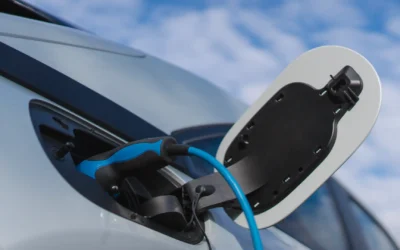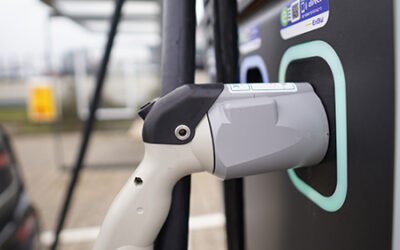• While there are a plethora of regulations, policies, and incentives to accelerate the transition to e-mobility, the more imperative question is whether the momentum required to spur on the transition will be maintained.
• Utilities are emerging as dominant players in the global race to electric vehicle adoption, beyond just as the power supplier.
• To address the increasing demand for EV charging, utilities are tackling energy management issues head-on with smart energy management and V2G.
Distribution System Operators (DSOs) and utilities will play a pivotal role in the expansion, reinforcement, and digitization of the grid required to sustain the EV transformation. They will do so by acquiring skills and technologies that advance the energy system and accelerate e-mobility, because EVs can go nowhere without a reliable electricity supply.
Similar to many countries committing to zero-emission new car sales by 2035, automakers are rewriting business models and reinventing powertrains. Major players in the industry, such as Volkswagen, have pledged to go completely electric by 2040. In tandem, there are several regulators strengthening carbon dioxide emission standards for passenger cars in the EU, through the Fit for 55 package of environmental reforms. Governments are offering incentives, including bonus payments and tax perks, to purchasers of EVs. While there are a plethora of regulations, policies, and incentives to accelerate the transition to e-mobility, the more imperative question is whether the momentum required to spur on the transition will be maintained.
The Indispensability of Utilities in E-Mobility
Utilities are emerging as dominant players in the global race to electric vehicle adoption beyond just as the power supplier. Utilities have significant competitive advantages as they have an established customer base, with insights to the customers’ electrical usage, and also have extensive infrastructure in place.
Centrica, a major power producer in the UK, Ireland, and North America, has transitioned into an e-Mobility service provider. It is also taking steps to ensure its fleet of 12,000 vehicles is completely electric. The state of California, the world’s fifth largest economy, has been driving the United States’ electric vehicle adoption and zero emissions policies for decades. Utility e-Mobility projects worth more than USD 100 Million are already planned or underway. Pacific Gas and Electric (PG&E), Southern California Edison (SCE), and San Diego Gas & Electric (SDG&E) have installed infrastructure to support more than 12,500 charging stations across the state. Furthermore, SDG&E has been working with the Port of San Diego to install chargers for electric medium-duty/heavy-duty vehicles and forklifts.
Utilities Addressing the Energy Management Issue
With the roll-out of more than 130 Million electric vehicles (EVs) in 2021 alone, Europe’s power grids now face a daunting challenge. An increase in the demand for EVs is linked to a natural increase in the demand for EV charging infrastructure. If EV drivers are to charge wherever and whenever they choose, the existing grid infrastructure must be expanded, reinforced, and digitized. The accelerated roll-out of EVs must be managed by expanding the required charging infrastructure.
To address the increasing demand for EV charging, utilities are tackling energy management issues head-on with smart energy management. This is a computer-based system designed to measure, monitor, and control energy consumption in buildings. In this way, utilities intend to ensure long-term supply and infrastructure issues are no longer problems caused by EV charging during peak demand.
In addition to this, there is another emerging trend known as Vehicle-to-Grid (V2G) charging. This allows stored energy from electric vehicles to be used to power the grid during peak hours, with the electric vehicles being recharged during non-peak times. E.ON, a German power company; EDF, based in France; and Italy’s Enel are partnering with Nissan to build V2G networks.
Looking Ahead
Utilities are leveraging their notable advantages when it comes to e-Mobility adoption. They have the knowledge pertaining to the industry, in addition to an established customer base. With features like smart energy management and Vehicle-to-Grid charging, they will also be in a position to address the imminent energy management issues.
EV Charging Infrastructure Service Overview
The research presented in this article is from PTR's EV Charging Infrastructure market research. For information about this service please submit a request shown below.
Contact Sales:
Europe
+49-89-12250950
Americas
+1 408-604-0522
Japan
+81-80-7808-1378
GCC/Rest of APAC
+971-58-1602441
More about our:
EV Charging Infrastructure Market Research
Recent Insights
Sustainability Across Sectors: Highlights from GreenTech Festival 2024
Recently, I had the privilege to attend and present at the Greentech Festival, an excellent event in the realm of sustainability. This influential...
An Evolving Market: Rise of Electric Vehicles in Europe (2023)
This infographic examines the electric vehicle (EV) market in the European region. It highlights the current and forecasted EV market size of each...
Evolution of V2G: CPOs-Automotive OEMs-Utilities at the center of transition
Evolution of V2G: CPOs-Automotive OEMs-Utilities at the center of transition [ba_advanced_divider active_element="text" title="About the Whitepaper"...


